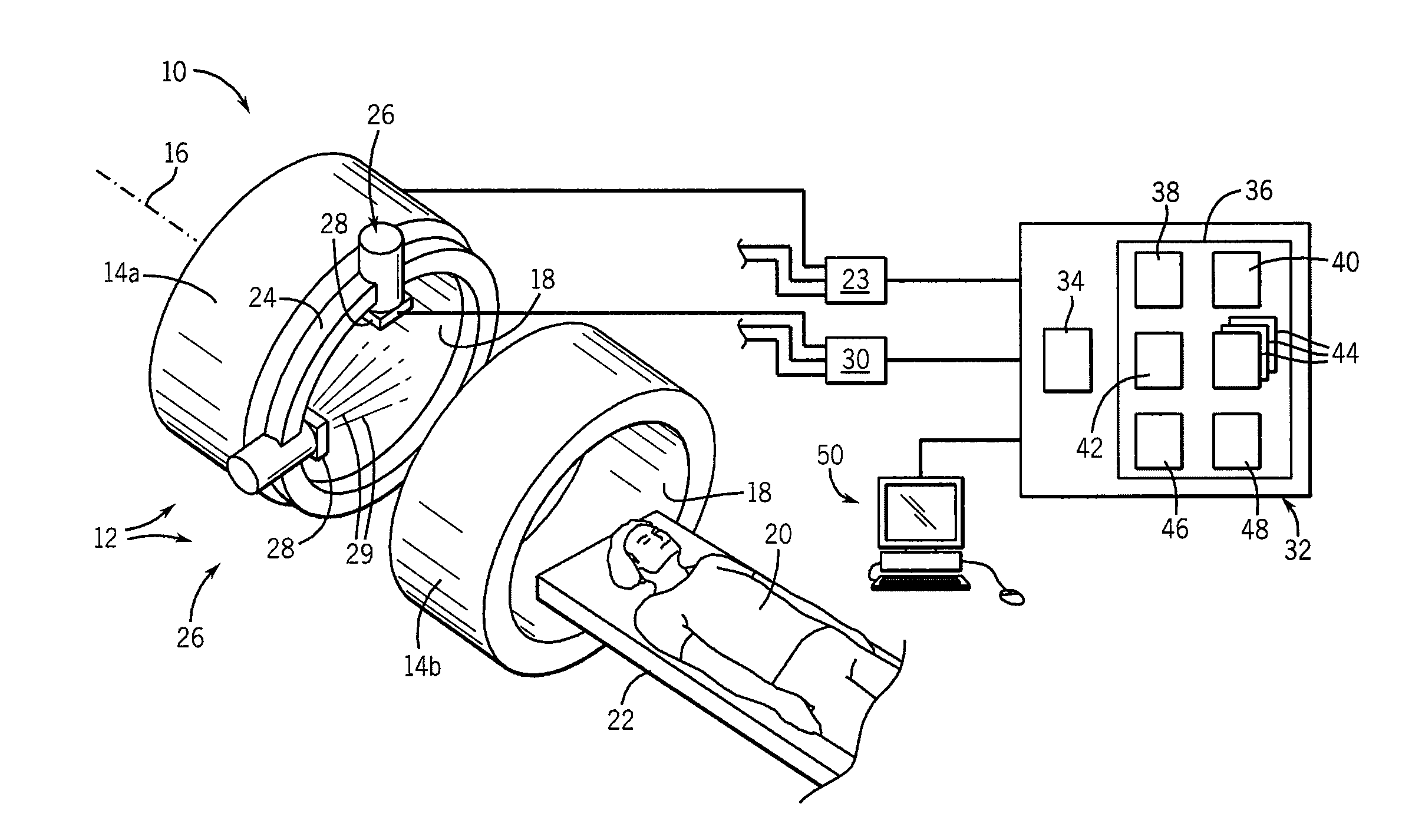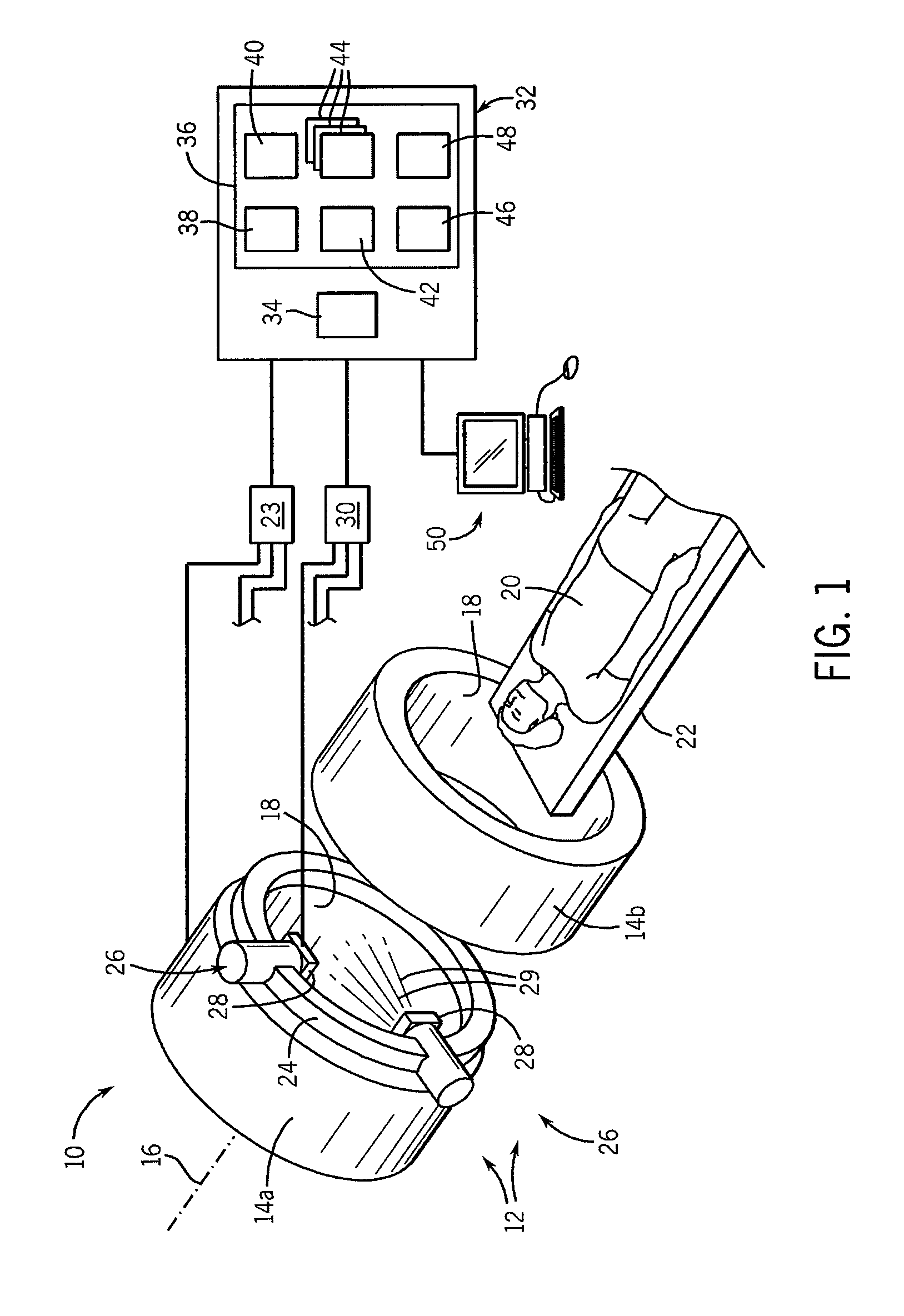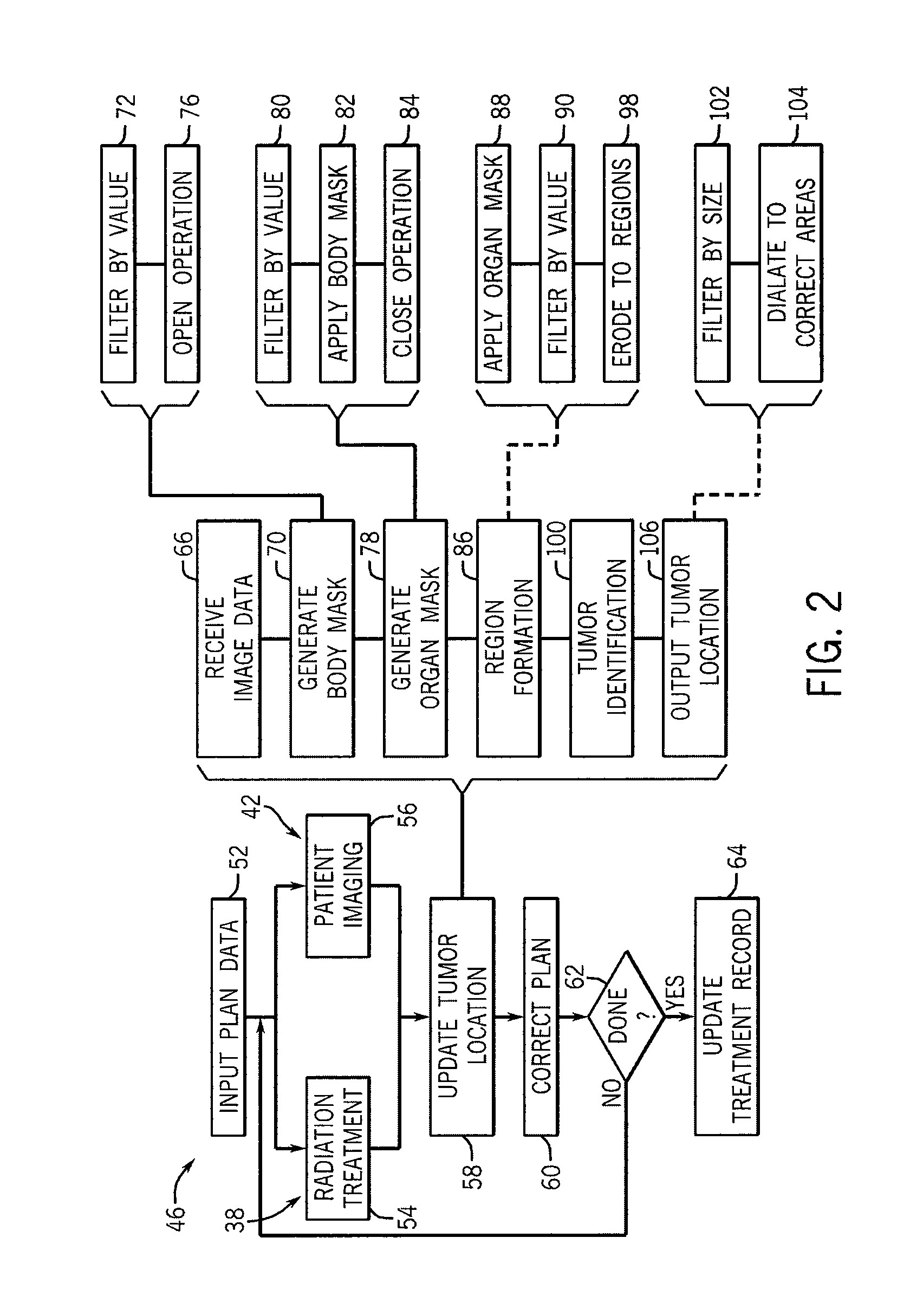High-Speed Tumor Segmentation System
a tumor and high-speed technology, applied in the field of tumor segmentation in medical imaging, can solve the problems of reducing the accuracy of dose placement, affecting the accuracy of tumor dose placement, and time-consuming process of tumor volume segmentation, and achieve the effect of fast automatic segmentation
- Summary
- Abstract
- Description
- Claims
- Application Information
AI Technical Summary
Benefits of technology
Problems solved by technology
Method used
Image
Examples
Embodiment Construction
Hardware
[0036]Referring now to FIG. 1, a combination imaging radiotherapy machine 10 may provide, for example, an MRI magnet assembly 12 having two toroidal magnet elements 14a and 14b spaced along an axis 16 and having aligned bores 18 sized to admit a patient 20 supported on a patient table 22. The magnet elements 14a and 14b may hold a superconducting BO electromagnet and one or more gradient and RF coils as is understood in the art of magnetic resonance imaging. The gradient and RF coils may communicate with an MRI subsystem 23 providing power amplifiers and the like as is also understood in the art.
[0037]A radiation therapy gantry 24 may be positioned between the magnet elements 14a and 14b, and may hold one or more radiation delivery systems 26 positioned to rotate about the axis 16 and direct radiation beams 29 toward the patient 20 when the patient 20 is positioned within the MRI magnet assembly 12. Each radiation delivery system 26 may include an electronically controllable...
PUM
 Login to View More
Login to View More Abstract
Description
Claims
Application Information
 Login to View More
Login to View More - R&D
- Intellectual Property
- Life Sciences
- Materials
- Tech Scout
- Unparalleled Data Quality
- Higher Quality Content
- 60% Fewer Hallucinations
Browse by: Latest US Patents, China's latest patents, Technical Efficacy Thesaurus, Application Domain, Technology Topic, Popular Technical Reports.
© 2025 PatSnap. All rights reserved.Legal|Privacy policy|Modern Slavery Act Transparency Statement|Sitemap|About US| Contact US: help@patsnap.com



